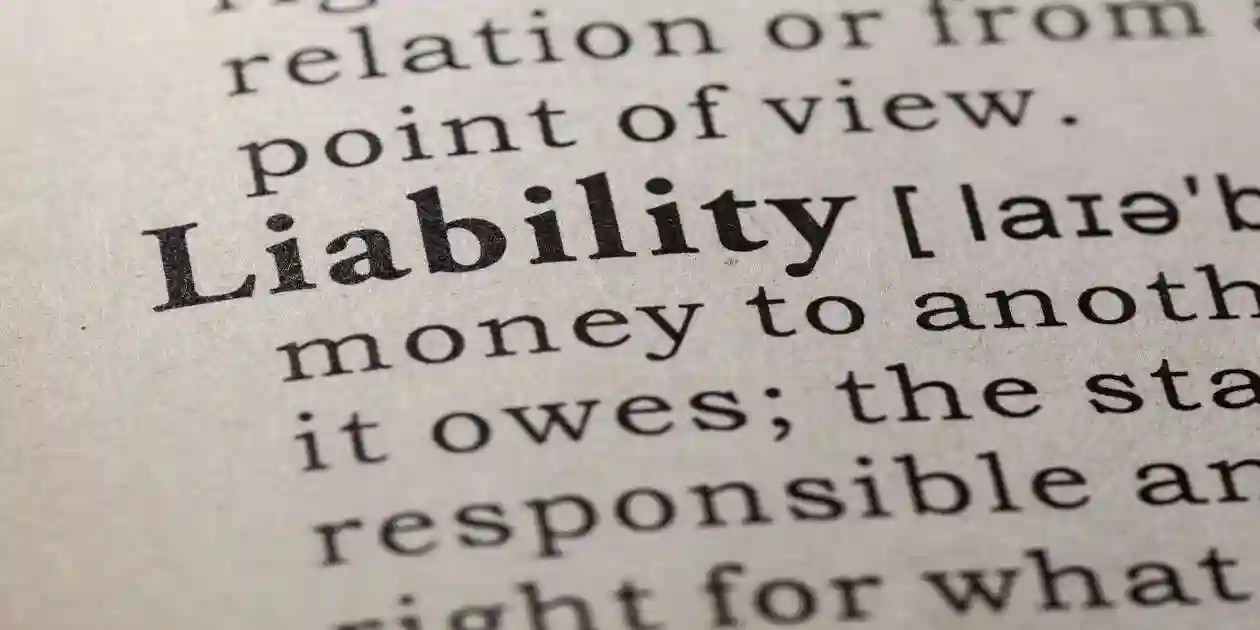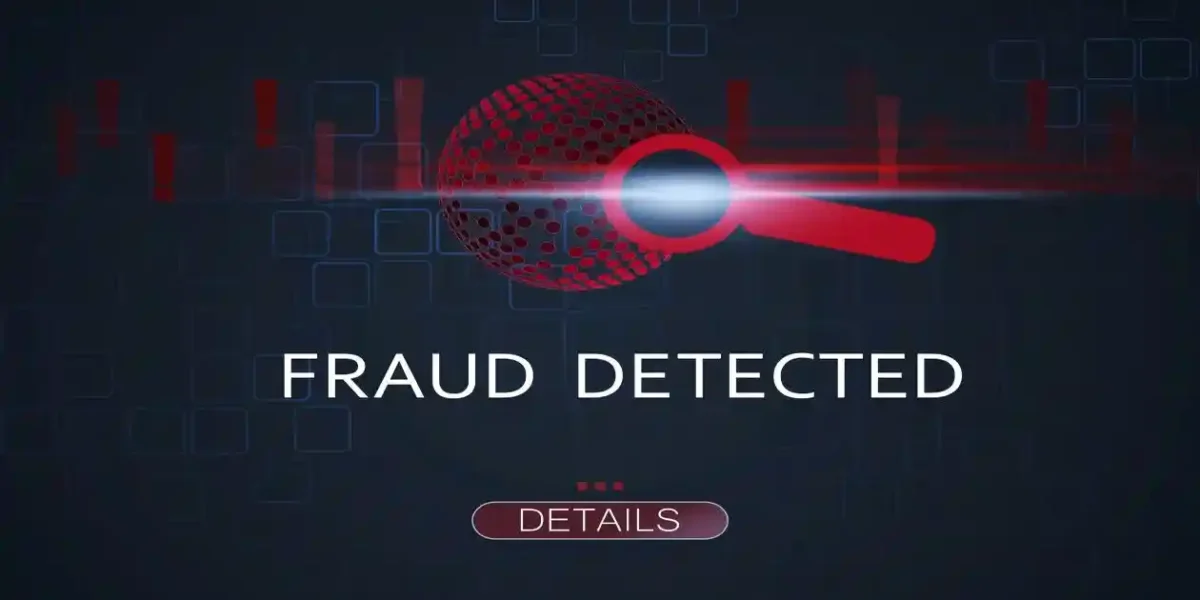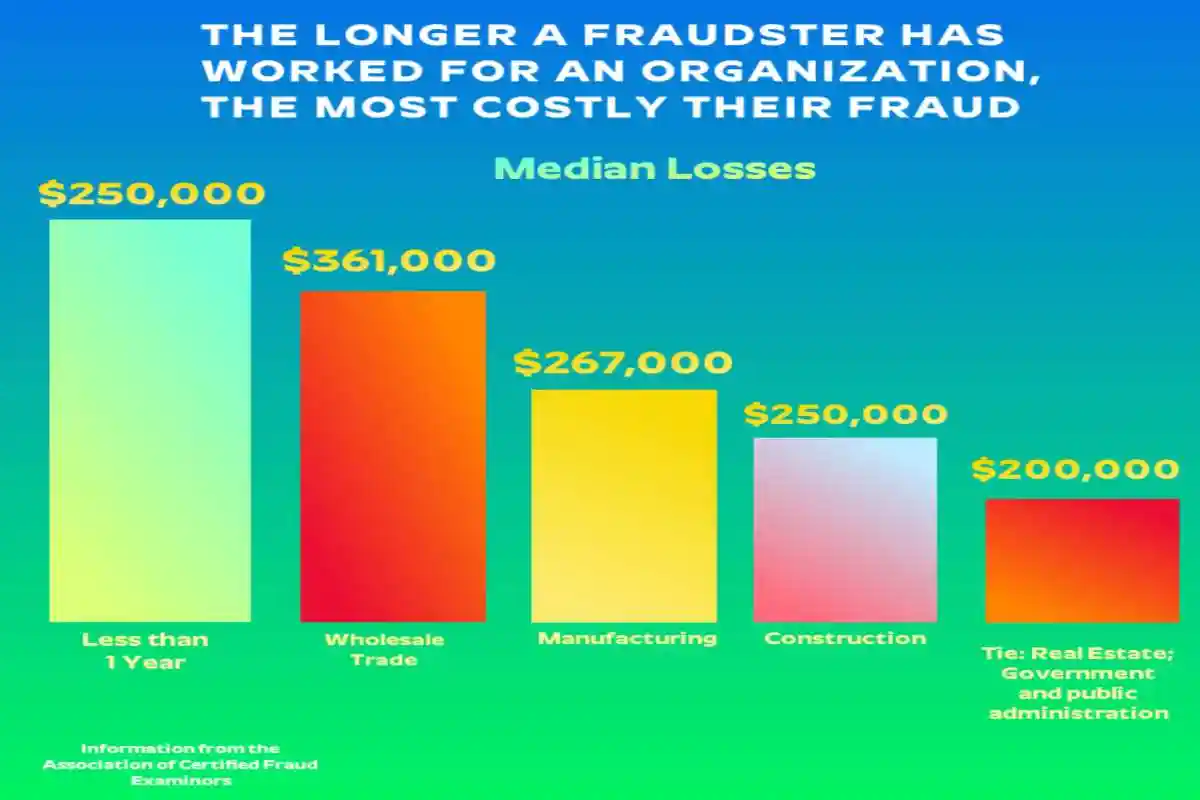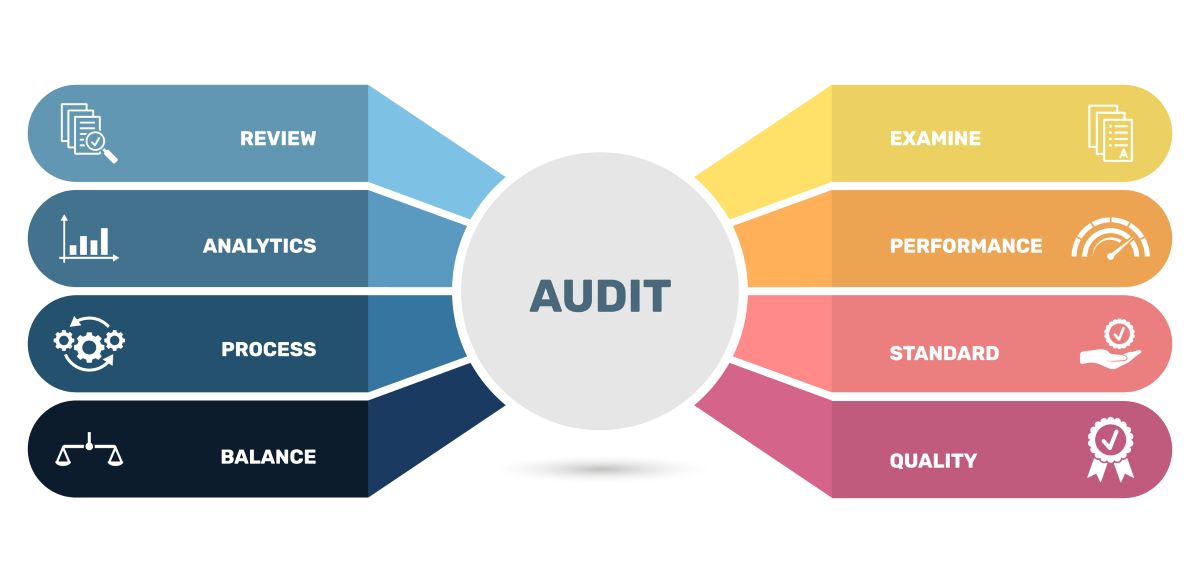Introduction to the Fortinet Class Action Lawsuit
- Fortinet Class Action Lawsuit: The Fortinet Class Action Lawsuit, Oklahoma Firefighters Pension and Retirement System v. Fortinet, Inc., No. 25-cv-08037 (N.D. Cal.), seeks to represent purchasers or acquirers of Fortinet, Inc. (NASDAQ: FTNT) common stock between November 8, 2024, and August 6, 2025. This securities litigation case highlights critical concerns regarding corporate governance and internal controls at the cybersecurity company.
- Basis: The Fortinet class action lawsuit alleges that defendants made materially false and misleading statements and failed to disclose crucial information to shareholders regarding the company’s business operations and financial prospects. The lawsuit specifically focuses on alleged deficiencies in internal controls over financial reporting and disclosures that potentially misled investors about the true nature of Fortinet’s upgrade cycle and product transitions.
- Allegations: The Fortinet class action lawsuit further alleges that on August 6, 2025, Fortinet revealed during its earnings call that Fortinet was already “approximately 40% to 50% of the way through the 2026 upgrade cycle at the end of the second quarter [of 2025].” This disclosure contradicted previous statements about the timing and progress of the upgrade cycle. The complaint also alleges that defendants failed to maintain adequate internal controls over financial reporting and made false and/or misleading statements about the company’s business prospects, operational and financial results, and internal controls.
- Corrective Disclosure: On this news, the price of Fortinet common stock fell more than 22%, according to the Fortinet class action lawsuit. This significant decline highlights the material impact that alleged violations of securities laws and corporate governance failures can have on shareholder value. The sharp stock price drop potentially caused substantial losses for investors who had relied on the company’s previous disclosures.
- Lead Plaintiff Motion: Lead plaintiff motions for the Fortinet class action lawsuit must be filed with the court no later than November 21, 2025. When a securities class action is filed, the Private Securities Litigation Reform Act (PSLRA) requires that within 20 days of the complaint filing, notice must be published informing shareholders of the pending litigation and their right to move the court to serve as lead plaintiff. This process ensures proper representation of shareholder interests in securities litigation cases.
PRE- AND POST-PSLRA STANDARDS FOR SECURITIES FRAUD LITIGATION
| Feature | Pre-PSLRA Standard | Post-PSLRA Standard |
| Motion to dismiss | Based on “notice pleading” (Federal Rule of Civil Procedure 8(a)), making it easier for plaintiffs to survive motions to dismiss. This often led to settlements to avoid costly litigation. | Requires satisfying PSLRA’s heightened pleading standards and the “plausibility” standard from Twombly and Iqbal. Failure to plead with particularity on any element can result in dismissal. |
| Pleading | “Notice pleading” was generally sufficient, though fraud claims under Federal Rule of Civil Procedure 9(b) required particularity for the circumstances of fraud, but intent could be alleged generally. | Each misleading statement must be stated with particularity, explaining why it was misleading. Facts supporting beliefs in claims based on “information and belief” must also be stated with particularity. |
| Scienter | Pleaded broadly; the “motive and opportunity” test was often sufficient to infer intent. | Requires alleging facts creating a “strong inference” of fraudulent intent, which must be at least as compelling as any opposing inference of non-fraudulent intent, as clarified in Tellabs, Inc. v. Makor Issues & Rights, Ltd.. |
| Loss causation | Not a significant pleading hurdle, often assumed if a plaintiff bought at an inflated price. | Requires pleading facts showing the fraud caused the economic loss, often by linking a corrective disclosure to a stock price drop. Dura Pharmaceuticals, Inc. v. Broudo affirmed this. |
| Discovery | Could proceed while a motion to dismiss was pending. | Automatically stayed during a motion to dismiss. |
| Safe harbor for forward-looking statements | No statutory protection. | Protects certain forward-looking statements if accompanied by “meaningful cautionary statements”. |
| Lead plaintiff selection | Often the first investor to file. | Court selects based on a “rebuttable presumption” that the investor with the largest financial interest is the most adequate. |
| Liability standard | For non-knowing violations, liability was joint and several. | For non-knowing violations, liability is proportionate; joint and several liability applies only if a jury finds knowing violation. |
| Mandatory sanctions | Available under Federal Rule of Civil Procedure 11, but judges were often reluctant to impose them. | Requires judges to review for abusive conduct |
The Eligibility Criteria for Lead Plaintiff Appointment in the Fortinet Class Action Lawsuit
- Have purchased Fortinet common stock during the Class Period (November 8, 2024 – August 6, 2025)
- Have suffered financial losses in those investments
- Be willing to actively supervise and direct the litigation
- Have the largest financial interest in the litigation among those seeking appointment
- Be capable of fairly and adequately representing the interests of class members
- Have no conflicts of interest that would hinder effective leadership of the class
- Demonstrate knowledge of corporate governance principles and securities litigation procedures
It is crucial to note that both domestic and international investors who meet these criteria are eligible to seek appointment as the lead plaintiff in the class action lawsuit, as courts have consistently recognized the rights of non-U.S. investors in securities litigation. This inclusive approach ensures that all affected shareholders have an opportunity to participate in corporate governance enforcement through the Fortinet class action lawsuit.
THE SETTLEMENENT PHASE IN THE FORTINET CLASS ACTION LAWSUIT
Phase | Description |
| Mediation/Negotiation | Before a settlement is finalized, the plaintiff’s attorneys and the defendants’ legal teams typically engage in extensive negotiations, often with a neutral, third-party mediator, to agree on the terms of a potential settlement. |
| Preliminary court approval | After a settlement is reached, the parties must submit the agreement to the court for preliminary approval. The court will review the fairness of the terms before moving forward. |
| Notice to class members | If the court grants preliminary approval, a court-approved notice is sent to all potential class members. This notice outlines the settlement details, including eligibility and the allocation plan for damages. |
| Claims administration | A court-appointed claims administrator manages the settlement fund. Eligible investors must submit a claim form with documentation to receive their portion of the settlement. |
| Final court approval | After claims are processed and notice requirements are met, the court holds a final hearing to approve the settlement. The court ensures it is fair and reasonable for the entire class. |
| Distribution of funds | Once final approval is granted, the claims administrator distributes the settlement funds to eligible claimants on a pro-rata basis, based on their recognized losses. The process can sometimes involve multiple rounds of payouts. |
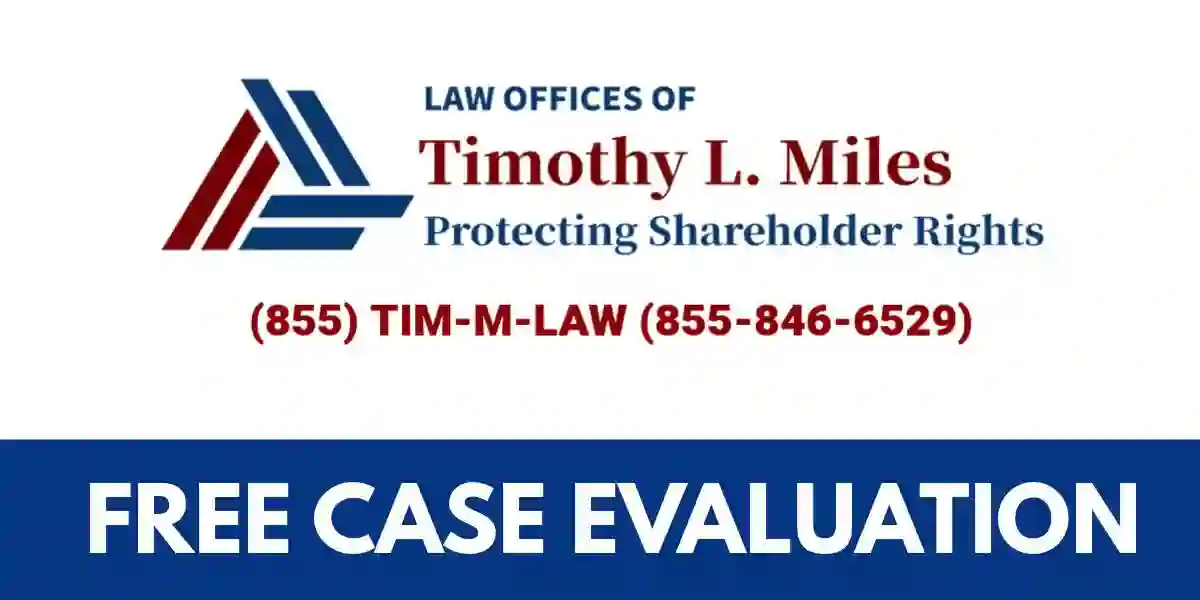
Common Types of Securities Fraud
Common Financial Statement Fraud Schemes
| Scheme Type | Description | Example |
| Fictitious Revenue | Recording non-existent sales through false documentation and phantom customers | Creating counterfeit sales contracts or engaging in fraudulent bill-and-hold arrangements that lack economic substance |
| Premature Revenue Recognition | Recognizing revenue before satisfying essential accounting criteria | Accelerating revenue recognition before completing contracted service obligations or product delivery requirements |
| Channel Stuffing | Forcing excessive inventory into distribution channels to artificially inflate sales | Providing unusual incentives to distributors to accept unnecessary inventory levels that exceed reasonable demand |
| Asset Overstatement | Deliberately inflating reported asset values through accounting manipulation | Recording phantom inventory or applying inadequate depreciation to overstate asset carrying values |
| Liability Concealment | Hiding financial obligations through improper accounting treatments | Deliberately understating debt levels or warranty obligations through accounting manipulation |
| Material Omissions | Withholding critical information required for informed investment decisions | Failing to disclose significant related party transactions or contingent liabilities |
| Journal Entry Manipulation | Falsifying accounting records through improper manual adjustments | Making unsupported last-minute entries near reporting deadlines to manipulate results |
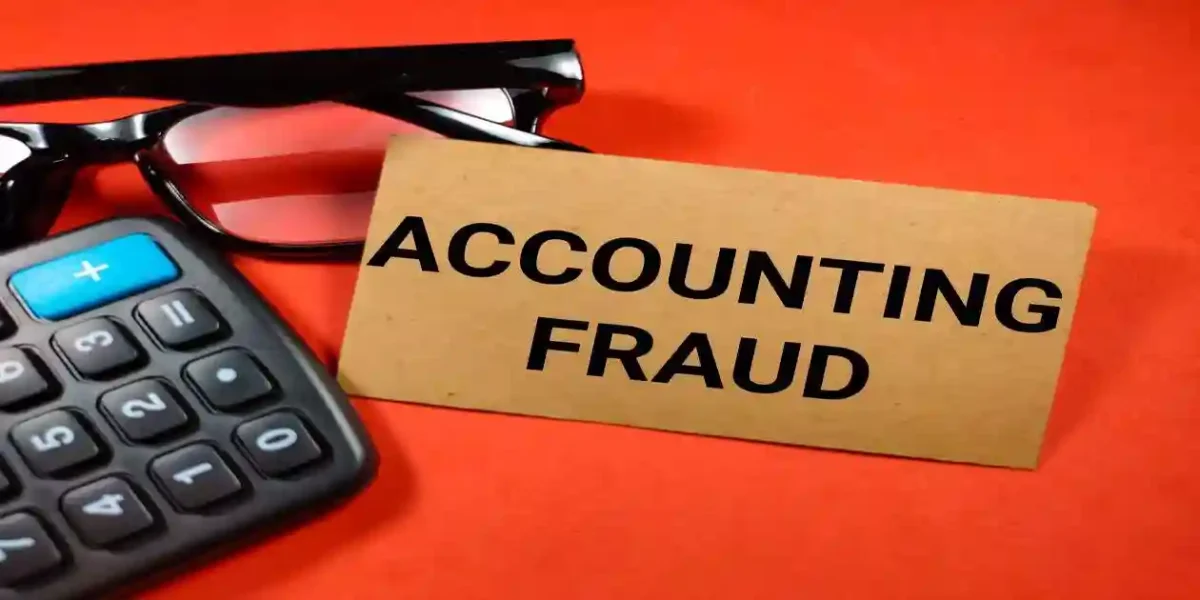
Misrepresentation of Financial Information: As alleged in the Fortinet class action lawsuit, companies may deliberately provide false or misleading financial statements to artificially inflate stock prices, often through:
- Revenue recognition manipulation
- Expense underreporting
- Asset value inflation
- Liability concealment
- Cash flow misrepresentation
Omissions of Material Facts: Securities fraud frequently involves failing to disclose critical information that reasonable investors would consider important in making investment decisions. This includes:
- Known regulatory challenges
- Significant operational problems
- Material weaknesses in internal controls
- Pending litigation or investigations
- Adverse business developments
Insider Trading: Corporate executives may engage in unauthorized trading based on material non-public information, violating fundamental principles of market fairness and corporate governance. This can involve:
- Trading ahead of significant announcements
- Tipping off others about non-public information
- Manipulating disclosure timing for personal gain
- Exploiting knowledge of internal control weaknesses
Consequences of Securities Fraud Like in the Fortinet Class Action Lawsuit
The repercussions of securities fraud extend far beyond immediate financial losses, impacting:
- Shareholder value through significant stock price declines
- Market confidence in corporate governance systems
- Company reputation and stakeholder trust
- Regulatory compliance costs and penalties
- Exposure to securities litigation
Companies found engaging in fraudulent practices often face:
- Substantial monetary penalties
- Costly regulatory investigations
- Expensive securities litigation
- Mandatory corporate governance reforms
- Enhanced oversight requirements
THE SECURITIES LITIGATION PROCESS
| Filing the Complaint | A lead plaintiff files a lawsuit on behalf of similarly affected shareholders, detailing the allegations against the company. |
| Motion to Dismiss | Defendants typically file a motion to dismiss, arguing that the complaint lacks sufficient claims. |
| Discovery | If the motion to dismiss is denied, both parties gather evidence, documents, emails, and witness testimonies. This phase can be extensive. |
| Motion for Class Certification | Plaintiffs request that the court to certify the lawsuit as a class action. The court assesses factors like the number of plaintiffs, commonality of claims, typicality of claims, and the adequacy of the proposed class representation. |
| Summary Judgment and Trial | Once the class is certified, the parties may file motions for summary judgment. If the case is not settled, it proceeds to trial, which is rare for securities class actions. |
| Settlement Negotiations and Approval | Most cases are resolved through settlements, negotiated between the parties, often with the help of a mediator. The court must review and grant preliminary approval to ensure the settlement is fair, adequate, and reasonable. |
| Class Notice | If the court grants preliminary approval, notice of the settlement is sent to all class members, often by mail, informing them about the terms and how to file a claim. |
| Final Approval Hearing | The court conducts a final hearing to review any objections and grant final approval of the settlement. |
| Claims Administration and Distribution | A court-appointed claims administrator manages the process of sending notices, processing claims from eligible class members, and distributing the settlement funds. The distribution is typically on a pro-rata basis based on recognized losses. |
The Role of Regulatory Bodies in the Fortinet Class Action Lawsuit
Regulatory authorities, particularly the Securities and Exchange Commission (SEC), play a vital role in:
The SEC maintains broad investigative powers and can impose significant penalties, including:
- Monetary fines
- Trading suspensions
- Officer and director bars
- Mandatory corporate reforms
- Ongoing compliance monitoring
Circuit Court Standards for Pleading Loss Causation in Securities Class Action Lawsuits
| Circuit | Summary of pleading standard | Key cases | Notes and circuit splits |
| First Circuit | Applies a relatively lenient standard under Rule 8(a), requiring only plausible allegations that connect the corrective disclosure to the preceding misrepresentation. | Massachusetts Retirement Systems v. CVS Caremark Corp. (2013). | Stands with circuits requiring only “plausible” allegations rather than particularity. |
| Second Circuit | Requires plaintiffs to allege that the subject of the fraudulent statement was the cause of the actual loss suffered. Does not require particularized pleading. | Lentell v. Merrill Lynch & Co. (2005); Emergent Capital Inv. Mgmt., LLC v. Stonepath Grp., Inc. (2003). | Focuses on “zone of risk” analysis and requires that the misstatement concerns the very facts that caused the loss. |
| Third Circuit | Follows a moderate approach under Rule 8(a), requiring a causal connection between the misrepresentation and the loss that is more than merely possible or speculative. | McCabe v. Ernst & Young, LLP (2007); EP Medsystems, Inc. v. EchoCath, Inc. (2000). | Requires plaintiffs to demonstrate that the revelation of fraudulent information was a “substantial factor” in causing the decline in stock value. |
| Fourth Circuit | Applies the heightened Rule 9(b) pleading standard to loss causation, requiring plaintiffs to plead with particularity how the corrective disclosure relates to the prior misrepresentation. | Katyle v. Penn National Gaming, Inc. (2011); Teachers’ Ret. Sys. of LA v. Hunter (2007). | Stands with the Seventh and Ninth Circuits in requiring particularized pleading of loss causation. |
| Fifth Circuit | Requires that plaintiffs allege both that the corrective disclosure specifically revealed the fraud and that the revelation of the fraud caused the loss. | Pub. Emps. Ret. Sys. of Miss. v. Amedisys, Inc. (2014); Lormand v. US Unwired, Inc. (2009). | Particularly stringent about the connection between corrective disclosure and prior misrepresentation. |
| Sixth Circuit | Follows a moderate approach, requiring plaintiffs to demonstrate a causal connection between the misrepresentation and the loss, but not requiring the heightened particularity of Rule 9(b). | Ohio Pub. Emps. Ret. Sys. v. Federal Home Loan Mortgage Corp. (2016); IBEW Local 58 v. Royal Bank of Scotland (2013). | Focuses on whether the disclosure revealed “some aspect” of the prior misrepresentation. |
| Seventh Circuit | Applies the heightened Rule 9(b) pleading standard to all elements of securities fraud, including loss causation. | Tricontinental Industries v. PricewaterhouseCoopers (2007); Ray v. Citigroup Global Markets (2007). | Stands with the Fourth and Ninth Circuits in requiring particularized pleading of loss causation. |
| Eighth Circuit | Applies a relatively lenient standard, requiring only that the complaint provide the defendant with notice of the plaintiff’s claim that the misrepresentation caused the loss. | In re Cerner Corp. Sec. Litig. (2005); Schaaf v. Residential Funding Corp. (2008). | Tends to analyze loss causation under the more permissive Rule 8(a) standard. |
| Ninth Circuit | Applies the heightened Rule 9(b) pleading standard to all elements of securities fraud, including loss causation. | Oregon Public Employees Retirement Fund v. Apollo Group Inc. (2014); Metzler Inv. GMBH v. Corinthian Colleges, Inc. (2008). | Previously inconsistent but firmly established Rule 9(b) standard in Oregon Public Employees v. Apollo (2014). |
| Tenth Circuit | Applies a moderate approach that requires a logical link between the misrepresentation and the economic loss, but does not explicitly require Rule 9(b) particularity. | In re Williams Sec. Litig. (2007); Nakkhumpun v. Taylor (2015). | Focuses on whether the disclosure revealed “some aspect” of the prior misrepresentation. |
| Eleventh Circuit | Requires plaintiffs to plead that the misrepresentation was the “substantial or significant contributing factor” in the loss, but generally follows Rule 8(a). | Hubbard v. BankAtlantic Bancorp, Inc. (2012); FindWhat Investor Group v. FindWhat.com (2011). | Emphasizes proximate causation principles in loss causation analysis. |
| D.C. Circuit | Has limited securities fraud jurisprudence but generally follows a more lenient approach aligned with Rule 8(a). | Plumbers & Steamfitters Local 773 Pension Fund v. Danske Bank (2020). | Generally follows the Supreme Court’s guidance in Dura Pharmaceuticals without imposing heightened pleading requirements. |
Importance of Compliance in the Fortinet Class Action Lawsuit
Maintaining robust compliance programs proves essential for:
Companies must prioritize:
Protecting Your Investments in the Fortinet Class Action Lawsuit
Investors must remain vigilant in safeguarding their investments through:
Effective protection strategies in the in the Fortinet Class Action Lawsuit include:
Strategies for Investor Protection in the Fortinet Class Action Lawsuit
Here are comprehensive strategies investors should consider to protect their interests and navigate potential securities fraud:
Circuit Cout Split for Pleading a Strong Inference of Scienter
| Circuit | Summary of Pleading Standard | Key Cases | Notes and Circuit Splits |
| First Circuit | Requires strong inferenceof scienter under PSLRA standards. Accepts allegations of motive and opportunity combined with strong circumstantial evidence. | Greenberg v. Crossroads Systems(2020); In re Biogen Securities Litigation(2019) | Aligns with majority circuits requiring “strong inference” but more lenient on motive and opportunity allegations than some circuits. |
| Second Circuit | Applies “strong inference”standard with emphasis on holistic analysis. Requires inference of scienter to be at least as compelling as any opposing inference. | Tellabs, Inc. v. Makor Issues & Rights(2007); ATSI Communications v. Shaar Fund(2021) | Leading circuiton scienter interpretation post-Tellabs. Emphasizes comparative plausibility of inferences. |
| Third Circuit | Follows Tellabsstandard requiring strong inference that is cogent and compelling. Accepts core operations doctrine in limited circumstances. | In re Hertz Global Holdings Securities Litigation(2020); City of Edinburgh Council v. Pfizer(2014) | Circuit spliton core operations doctrine – more restrictive than some circuits but accepts it in narrow circumstances. |
| Fourth Circuit | Requires “strong inference”with particular emphasis on contemporaneous evidence. Skeptical of pure motive and opportunity allegations. | Teachers’ Retirement System v. Hunter(2019); Cozzarelli v. Inspire Pharmaceuticals(2008) | More demanding standard for motive and opportunityallegations compared to First and Ninth Circuits. |
| Fifth rcuit | Applies strict “strong inference”standard. Requires particularized factssuggesting deliberate recklessness or actual knowledge. | ABC Arbitrage Plaintiffs Group v. Tchuruk(2002); Rosenzweig v. Azurix Corp.(2003) | Most restrictive circuiton scienter pleading. Rarely accepts motive and opportunity alone. |
| Sixth Circuit | Follows Tellabswith moderate application. Accepts core operations doctrineand strong circumstantial evidence. | In re Omnicare Securities Litigation(2014); Helwig v. Vencor(2001) | Middle groundapproach – less restrictive than Fifth Circuit but more demanding than Ninth Circuit. |
| Seventh Circuit | Home of Tellabs decision. Requires holistic analysis where inference of scienter must be at least as compellingas competing inferences. | Tellabs, Inc. v. Makor Issues & Rights(2007); Higginbotham v. Baxter International(2007) | Authoritative circuitpost-Tellabs. Emphasizes comparative plausibilitystandard. |
| Eighth Circuit | Applies “strong inference”standard with acceptance of core operations doctrine. Moderate approach to motive and opportunity. | In re K-tel International Securities Litigation(2002); In re Navarre Corp. Securities Litigation(2002) | Generally follows mainstream approach without significant departures from other circuits. |
| Ninth Circuit | Most lenient circuiton scienter pleading. Readily accepts motive and opportunityallegations and core operations doctrine. | In re Oracle Corp. Securities Litigation(2010); Zucco Partners v. Digimarc Corp.(2009) | Major circuit split- significantly more plaintiff-friendly than Fifth, Second, and Fourth Circuits. |
| Tenth Circuit | Requires “strong inference”with emphasis on deliberate recklessness. Moderate acceptance of circumstantial evidence. | City of Philadelphia v. Fleming Cos.(2001); Adams v. Kinder-Morgan(2003) | Follows mainstream approach similar to Sixth and Eighth Circuits. |
| Eleventh Circuit | Applies strict “strong inference”standard. Requires particularized allegationsof actual knowledge or deliberate recklessness. | Bryant v. Avado Brands(1999); In re Stac Electronics Securities Litigation(1999) | Restrictive approachsimilar to Fifth Circuit. Skeptical of pure motive and opportunity theories. |
| D.C. Circuit | Follows Tellabsstandard with rigorous analysis. Emphasizes need for contemporaneous evidenceof scienter. | Jaffee v. Crane Co.(2016); Longman v. Food Lion(1999) | Sophisticated analysisreflecting complex securities cases. Generally restrictive but fact-specific. |
| Federal Circuit | Limited securities jurisdiction. When applicable, follows Tellabsstandard with emphasis on technical complexityconsiderations. | In re Seagate Technology Securities Litigation(2008) | Rarely handles securities cases. Defers to regional circuits on most scienter issues. |
Conduct Thorough Due Diligence
Before making any investment decisions, shareholders must conduct extensive research focusing on:
- Comprehensive analysis of the company’s financial statements, paying special attention to revenue recognition practices and internal controls
- Detailed evaluation of management’s track record in maintaining strong corporate governance
- Assessment of the company’s regulatory compliance history and any past securities litigation
- Review of analyst reports and independent research highlighting potential red flags
- Examination of the company’s corporate governance structure, including board independence and audit committee effectiveness
Warning signs that warrant further investigation include:
Frequent changes in executive leadership or board composition
History of regulatory violations or securities litigation
Weak or ineffective internal controls
Inconsistent financial reporting patterns
Unusual related-party transactions
Monitor Company Communications and Disclosures in the Fortinet Class Action Lawsuit
Maintaining vigilant oversight of company communications proves essential:
- Carefully review all SEC filings, particularly Forms 10-K, 10-Q, and 8-K
- Analyze earnings calls transcripts and management presentations
- Track company press releases and public statements
- Monitor regulatory investigations or enforcement actions
- Follow securities litigation developments affecting the company
Pay particular attention to:
- Changes in accounting policies or practices
- Modifications to internal controls
- Corporate governance updates
- Management’s discussion of operational challenges
- Disclosure of material risks or uncertainties
Implement Portfolio Diversification Strategies in the Fortinet Class Action Lawsuit
Effective diversification remains crucial for risk management:
- Spread investments across multiple sectors and industries
- Balance holdings between growth and value stocks
- Consider geographic diversification
- Maintain appropriate position sizes
- Regular portfolio rebalancing
Key diversification principles include:
- Avoiding over-concentration in single companies
- Understanding sector-specific risks
- Monitoring correlation between holdings
- Maintaining liquidity reserves
- Regular risk assessment and rebalancing
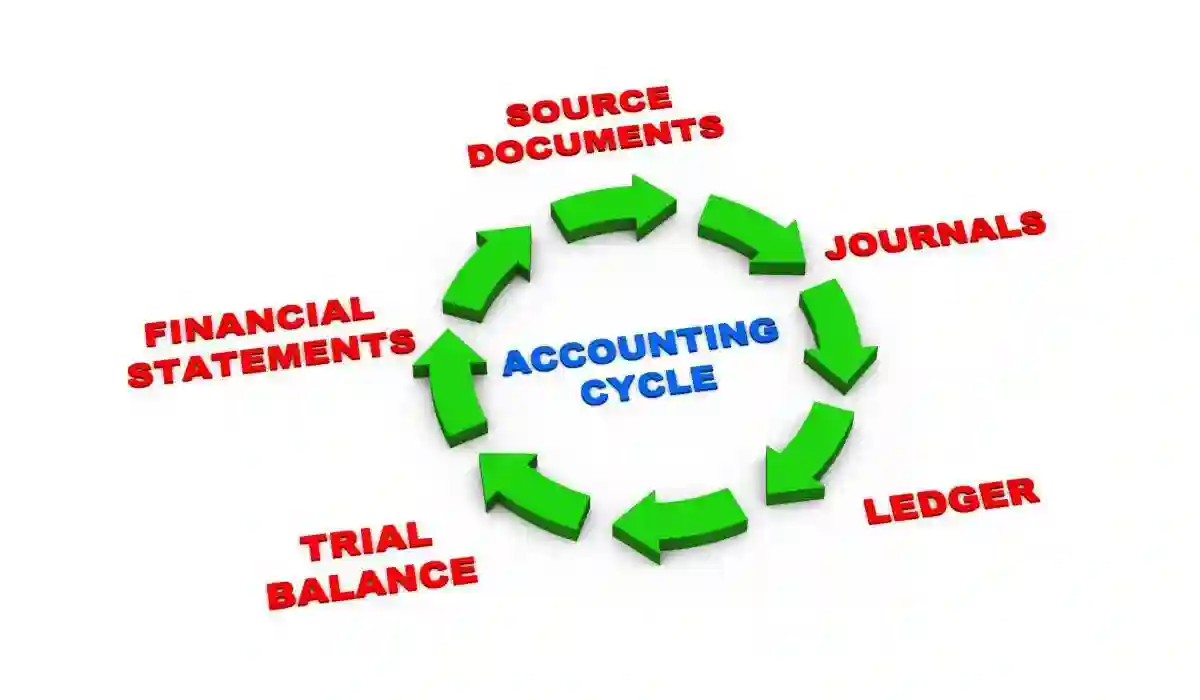
Steps in the Fortinet Class Action Lawsuit
- Filing the Complaint: A lead plaintiff files a lawsuit on behalf of similarly affected shareholders, detailing the allegations against the company.
- Motion to Dismiss: Defendants typically file a motion to dismiss, arguing the complaint lacks sufficient claims.
- Discovery: If the motion to dismiss is denied, both parties gather evidence, documents, emails, and witness testimonies. This phase can be extensive.
- Motion for Class Certification: Plaintiffs request the court to certify the lawsuit as a class action. The court assesses factors like the number of plaintiffs, commonality of claims, typicality of claims, and the adequacy of the proposed class representation.
- Summary Judgment and Trial: Once the class is certified, the parties may file motions for summary judgment. If the case is not settled, it proceeds to trial, which is rare for securities class actions.
- Settlement Negotiations and Approval: Most cases are resolved through settlements, negotiated between the parties, often with the help of a mediator. The court must review and grant preliminary approval to ensure the settlement is fair, adequate, and reasonable.
- Class Notice: If the court grants preliminary approval, notice of the settlement is sent to all class members, often by mail, informing them about the terms and how to file a claim.
- Final Approval Hearing: The court conducts a final hearing to review any objections and grant final approval of the settlement.
- Claims Administration and Distribution: A court-appointed claims administrator manages the process of sending notices, processing claims from eligible class members, and distributing the settlement funds. The distribution is typically on a pro-rata basis based on recognized losses.
The Lead Plaintiff Deadline in the Fortinet Class Action Lawsuit
Lead plaintiff motions for the Fortinet class action lawsuit must be filed with the court no later than November 21, 2025. When a securities class action is filed:
- The person who files the first complaint is required to publish a notice announcing the filing.
- Anyone who wants to be the lead plaintiff on behalf of the class must thereafter file a motion to be appointed as lead plaintiff(s) no later than 60 days after the notice was published.
The Benefits of Serving as a Lead Plaintiff in the Fortinet Class Action Lawsuit
- Influencing litigation strategy: As a lead plaintiff, you have a direct voice in key strategic decisions, including the decision to settle or proceed to trial.
- Negotiating more competitive fees: Your involvement provides an opportunity to negotiate more competitive attorney fees and reduce litigation costs, which can maximize the net recovery for the entire class.
- Active participation in the case: You will be able to review important court filings, monitor the progress of the case, and discuss litigation strategies with legal counsel.
- Leading settlement discussions: Lead plaintiffs participate in mediation and settlement discussions and must approve any settlement before it is presented to the court.
- No financial risk: In most cases, no financial risk, as lead counsel covers all costs and expenses. They work on a contingency basis are only paid if they secure a settlement or judgment, and reimbursement for expenses comes from the settlement fund, not your personal assets.
Key considerations for class members in the Fortinet Class Action Lawsuit
- Eligibility: Generally, investors must have purchased the stock during the specified class period and experienced financial losses.
- Documentation: Proof of stock ownership and losses is needed to support a claim.
- Payouts: Individual payouts depend on the recognized loss, the number of claimants, and deductions for legal and administrative costs.
- Timeline: The process can take several years. In 2024, the average timeline for U.S. securities class action settlements was about 45.4 months, or nearly 4 years.
The Responsibilities the Lead Plaintiff Will Have in the Fortinet Class Action Lawsuit
- Overseeing lead counsel: You will select, monitor, and oversee the law firm representing the class.
- Reviewing legal documents: You will review and provide feedback on important court filings before they are submitted.
- Discussing strategy: You will work directly with lead counsel to discuss litigation strategies and key decisions.
- Potential participation in legal events: This may include attending depositions and hearings, if necessary.
- Input on settlement decisions: Your input will be crucial for any decision concerning the settlement of the securities class action.
Who is Affected by the Fortinet Class Action Lawsuit?
- This class action lawsuit primarily affects investors who purchased shares of Fortinet, Inc. (NASDAQ: FTNT) and suffered losses during the Class Period: November 8, 2024 to August 6, 2025
- If you invested in the company during this specific timeframe, you may be a member of the affected class and potentially eligible for compensation.
How to determine if you are eligible
- The lawsuit is defined by a specific time frame and set of circumstances.
- We can help you determine your eligibility and guide you on the next steps to take.
Beyond the investors
- Executives and board members
- Other stakeholders
- The company’s overall reputation and financial stability
What Is the Securities Act of 1934?
The Securities Act of 1934 is a significant piece of legislation that was enacted in the United States to regulate the securities industry.
- This act was passed in response to the stock market crash of 1929 and the subsequent Great Depression. Its main purpose is to protect investors by ensuring that they have access to accurate and reliable information about securities being offered for public sale.
- The act requires companies to register with the Securities and Exchange Commission (SEC) and disclose relevant financial information to the public.
- It also regulates the activities of brokers, dealers, and exchanges to ensure fair and transparent trading practices.
Overall, the Securities Act of 1934 plays a crucial role in promoting investor confidence and maintaining the integrity of the securities market
The Class Period in the Fortinet Class Action Lawsuit
In a securities class action, such as the Fortinet class action lawsuit:
- The class period refers to the specific time frame during which the alleged fraudulent activity occurred. It is the period in which the plaintiffs claim to have suffered financial losses due to misrepresentations or omissions made by the defendants.
- The class period is crucial in determining who can be included in the class and seek damages.
- It typically starts when the alleged fraud was first publicly disclosed or when investors should have reasonably become aware of it.
- The class period usually ends when the alleged fraud is revealed to the public or when the plaintiffs file a lawsuit.
- The length of the class period can vary depending on the specific circumstances of each case.
What Damages Am I Entitled To?
In a securities fraud case, the plaintiff’s damages are typically calculated as out-of-pocket losses.
- These losses are expressed as the difference between:
- the price at which the stock was sold and the price at which the stock would have been sold absent any artificial inflation caused by the defendant’s alleged misrepresentations or omissions.
Case Termination and Settlement Distribution
- The final phase of the Fortinet class action lawsuit involves the formal termination of the case and distribution of settlement funds. This critical stage represents the culmination of the securities litigation process and requires careful oversight to ensure proper disbursement to eligible class members while maintaining strong internal controls.
- The Securities Exchange Act of 1934 provides the fundamental regulatory framework governing securities litigation settlements and their distribution. This landmark legislation, which established the SEC, continues to play a vital role in protecting investor interests through robust corporate governance requirements and enforcement mechanisms.
- The Act’s provisions regarding settlement distributions emphasize transparency and fairness, requiring detailed documentation and strict internal controls throughout the process. These requirements help ensure that settlement funds are properly allocated to eligible shareholders who suffered losses due to alleged corporate misconduct.
- In securities class actions like the Fortinet class action lawsuit, the calculation of damages typically focuses on out-of-pocket losses incurred by investors. This methodology aligns with established legal precedents and corporate governance principles that seek to compensate shareholders for actual financial harm while maintaining market integrity.
- Investors affected by the Fortinet class action lawsuit possess specific rights throughout the settlement process. These rights are protected by both federal securities laws and court-supervised procedures that emphasize transparency and fairness in fund distribution. Understanding these rights becomes essential for shareholders seeking to recover their proportionate share of any settlement.
- The options available to affected investors in the Fortinet class action lawsuit carry different implications that warrant careful consideration. Each choice – whether to participate in the settlement, opt-out, or object – should be evaluated based on individual circumstances and potential outcomes. Strong corporate governance practices require that these options be clearly communicated to all eligible class members.
Understanding the Initiation of the Fortinet Class Action Lawsuit
- The Fortinet class action lawsuit was initiated following allegations that the company provided misleading information about its financial condition and operations.
- These allegations highlight the critical importance of maintaining robust internal controls and transparent corporate governance practices to prevent potential securities violations.
Joining the Fortinet class action lawsuit
Shareholders who purchased stock during the specified class period and experienced losses are automatically considered class members. This automatic inclusion reflects established securities litigation procedures designed to protect investor interests. However, those considering a lead plaintiff position must take additional steps within prescribed deadlines.
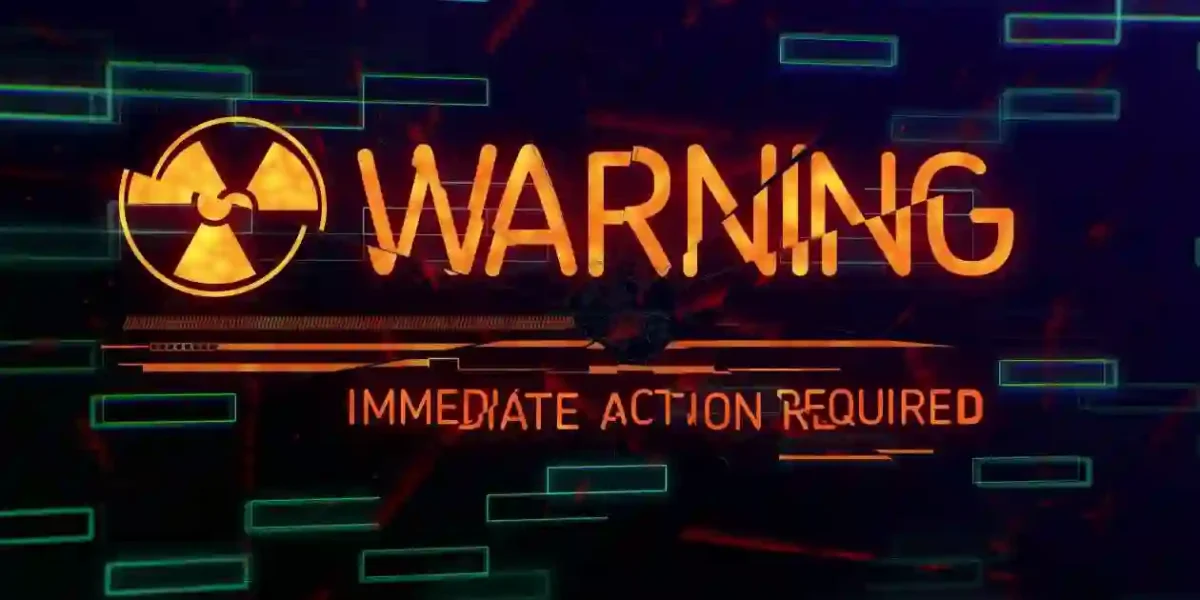
Benefits of the Fortinet class action lawsuit
- Class action lawsuits like the Fortinet class action lawsuit serve as crucial mechanisms for enforcing corporate governance standards and protecting shareholder interests.
- By allowing investors to collectively pursue claims, these actions promote accountability and help maintain market integrity.
- The potential benefits extend beyond individual compensation to include systemic improvements in corporate behavior and internal controls.
Timeline for Resolution for the Fortinet class action lawsuit
- Securities class actions typically follow complex timelines influenced by various factors including case complexity, settlement negotiations, and court procedures. The duration can range from months to years, with each phase requiring careful attention to internal controls and corporate governance standards to ensure proper handling of claims and fund distribution.
- For shareholders seeking additional information about their rights or considering a lead plaintiff position in the Fortinet class action lawsuit, attorney Timothy L. Miles offers complimentary consultations. His office maintains strict internal controls to protect client confidentiality while providing comprehensive guidance on securities litigation matters.
Gathering and Organizing Relevant Evidence
- In a securities class action lawsuit like the one against Fortinet, evidence is the cornerstone of building a compelling case. For affected shareholders, gathering and organizing all relevant financial and investment documentation is a crucial first step.
- The evidence will help substantiate claims of corporate misconduct and demonstrate the financial harm you may have suffered.
- Company documents: Gather all press releases, financial statements (like 10-K and 10-Q reports), and analyst reports related to Fortinet that you have.
- Your investment history: Meticulously document your investment history with Fortinet, including:
- Dates of all stock purchases and sales
- The quantities of shares bought or sold
- The prices of each transaction
- Communications: Compile any emails or other communications that shed light on the alleged wrongdoing.
- Brokerage records: Collect all relevant brokerage statements and confirmation slips.
- Start a file: Create a comprehensive file of all relevant documents.
- Categorize and date: Organize your documents by type and date. This will help your legal counsel easily retrieve and review information.
- Digital copies: If possible, keep digital copies of all documents in a secure location.
Staying Informed: Monitoring Case Developments
- In a securities class action lawsuit, keeping up with case developments is crucial for shareholders. As the Fortinet class action lawsuitc class action lawsuit moves forward, new information can significantly impact the strategy and potential outcomes.
- Here’s how to stay informed and well-positioned throughout the process:
Rely on communication with your legal team
- Understanding the implications of new information, such as court rulings.
- Assessing the potential risks and benefits of different courses of action.
- Making informed decisions, such as whether to accept a settlement offer.
Follow news and market developments
- Gain insights into market trends related to Fortinet lawsuit.
- Understand broader regulatory changes that may influence the case.
- Better anticipate shifts in the legal and financial landscape.
Knowledge is power
- In securities class actions, staying informed is a key component of successful participation.
- By following these steps, you can ensure you are ready to protect your interests and adapt your strategy as the Fortinet class action lawsuit progresses.
Rights of Investors
Investors affected by the Fortinet class action lawsuit possess specific rights that they can exercise. Understanding these rights is vital for anyone considering involvement in the lawsuit.
Right to Information
- Investors have the right to receive accurate and timely updates regarding the Fortinet lawsuit.
- This includes information on the case’s progress, potential settlements, and any necessary actions they may need to undertake.
Right to Participate
- Affected investors have the right to join the Fortinet class action lawsuit.
- This allows them to collaborate with other investors in seeking compensation for their losses without the burden of filing individual lawsuits.
Right to Legal Representation
- Investors can seek legal counsel to navigate the complexities of the Fortinet class action lawsuit.
- Legal professionals can provide guidance and support throughout the process.
- If you suffered substantial losses and wish to serve as lead plaintiff of the Fortinet class action lawsuit, or just have general questions about you rights as a shareholder, please contact attorney Timothy L. Miles of the Law Offices of Timothy L. Miles, at no cost, by calling 855/846-6529 or via e-mail at [email protected].
Options for Investors
Investors facing losses due to the Fortinet class action lawsuit have several options available to them. Each option carries its own implications and potential outcomes.
Joining the Class Action
- One of the most straightforward options for investors is to join the Fortinet class action lawsuit .
- By doing so, they can collectively pursue compensation for their losses without the need for individual litigation.
Filing an Individual Claim
- In certain situations, investors may opt to file individual claims instead of joining the Tronox lawsuit.
- This option may be appropriate for those who believe their losses are significant enough to warrant separate legal action.
Seeking Legal Advice
- Consulting with a legal professional experienced in securities law can provide investors with insights into their best course of action.
- Legal experts can help assess the merits of individual claims versus joining the class action.
The Role of Law Firms
- Law firms play a crucial role in the Fortinet class action lawsuit.
- They provide the necessary legal experience and representation for investors seeking to recover their losses.
Selecting a Law Firm
- Investors have the option to choose a law firm that practices securities fraud cases.
- A reputable firm can offer valuable insights and increase the likelihood of a favorable outcome.
- If you suffered substantial losses and wish to serve as lead plaintiff of the Fortinet class action lawsuit, or just have general questions about you rights as a shareholder, please contact attorney Timothy L. Miles of the Law Offices of Timothy L. Miles, at no cost, by calling 855/846-6529 or via e-mail at [email protected].
Frequently Asked Questions About the Fortinet Class Action Lawsuit
What initiated the Fortinet class action lawsuit?
The Fortinet class action lawsuit was initiated by investors alleging that Tronox provided misleading information regarding its financial health and operations, resulting in financial losses.
How can I join the Fortinet class action lawsuit?
If you purchased shares during the class period and suffered a loss, then you are automatically a member of the class and do not need to do anything at this point unless you are considering moving for lead plaintiff.
What are the potential benefits of a Fortinet class action lawsuit?
Class action lawsuits allow individual investors to collectively seek justice and compensation, which might be challenging to pursue individually. They also promote corporate accountability.
How long will the Fortinet class action lawsuit take to resolve?
The duration of class action lawsuits can vary significantly, depending on the complexity of the case, legal strategies, and whether settlements are reached. It could take several months to years.
Contact Timothy L. Miles Today About a Fortinet Class Action Lawsuit
If you suffered substantial losses and wish to serve as lead plaintiff of the Fortinet class action lawsuit, or just have general questions about you rights as a shareholder, please contact attorney Timothy L. Miles of the Law Offices of Timothy L. Miles, at no cost, by calling 855/846-6529 or via e-mail at [email protected]. (24/7/365).
Timothy L. Miles, Esq.
Law Offices of Timothy L. Miles
Tapestry at Brentwood Town Center
300 Centerview Dr. #247
Mailbox #1091
Brentwood,TN 37027
Phone: (855) Tim-MLaw (855-846-6529)
Email: [email protected]
Website: www.classactionlawyertn.com
Facebook Linkedin Pinterest youtube
Visit Our Extensive Investor Hub: Learning for Informed Investors


